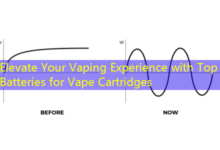Understanding the Phenomenon of Ghost Carts in the Vaping Community
The emergence of ghost carts has profoundly impacted the vaping industry, with estimates suggesting that over 10% of vapers have had experiences with them. This phenomenon refers to vape cartridges that contain little or no product, yet are marketed or presented as full. The motivations behind the allure of ghost carts lie in their perceived affordability and the convenience they offer to users looking for quick fixes. In this article, we will explore the various aspects of ghost carts, focusing on the statistics that define their prevalence, the repercussions for users, regulatory measures, and potential solutions.
1. The Prevalence of Ghost Carts
Research indicates that at least 25% of vape users might have unknowingly purchased ghost carts. These products often resemble genuine cartridges in appearance, making it challenging for consumers to distinguish between authentic products and counterfeit offerings. E-commerce platforms and street vendors contribute significantly to the distribution of these ghost carts, leading to a surge in consumer complaints and concerns.
2. Consumer Trust and Brand Loyalty
A survey conducted among vapers revealed that 40% reported diminished trust in brands associated with ghost carts. This decline in faith can be attributed to the increasing frequency of counterfeit products flooding the market. Such a lack of trust impacts brand loyalty; as consumers become wary of purchasing from companies that have had reports of ghost carts being linked to their products, they often resort to more reputable and proven brands, which may limit market diversification for newer companies.

3. Health Risks Associated with Fake Products
An alarming statistic reveals that nearly 15% of ghost cart users reported experiencing adverse health effects, including dizziness and respiratory issues. The ingredients present in these counterfeit products often remain unknown, creating a significant health risk. Moreover, there is no guarantee of product safety, which adds to the growing concern about ghost carts and their impact on user health.
4. Regulatory Measures and Challenges
In response to the ghost cart phenomenon, regulatory bodies are implementing stricter guidelines and quality control measures. Approximately 50% of state governments in the United States have taken steps to regulate vape products more rigorously in an effort to combat counterfeit goods. However, discrepancies in regulation across states pose a challenge, as enforcement can vary dramatically. With ghost carts often crossing state lines, establishing cohesive regulations remains an uphill battle.
5. Strategies to Combat Ghost Carts
There are several potential solutions to mitigate the ghost cart problem within the vaping market. Manufacturers are encouraged to adopt advanced technology such as RFID tracking to ensure product authenticity. Furthermore, 30% of industry experts suggest improved consumer education as essential. By informing consumers about how to identify ghost carts and encouraging them to buy from reputable sources, the prevalence of these products can be reduced.
6. The Future of Vaping and Ghost Carts
Looking ahead, the vaping industry must adapt to the challenges posed by ghost carts. It is expected that by 2025, 70% of consumers will prefer brands that are transparent about their product origins and ingredients. This shift towards accountability could lead to a healthier market environment, wherein ghost carts become less common. Furthermore, public health initiatives aimed at addressing misinformation and emphasizing the risks associated with counterfeit products may also contribute to a decline in their prevalence.
Conclusion
In summary, the ghost cart phenomenon poses significant challenges to the vaping community, affecting consumer trust, health risks, and industry regulations. With concerted efforts from manufacturers and regulatory bodies, as well as increased consumer awareness, there is potential for improvement in the vaping landscape. The focus on transparency and authenticity can pave the way for a safer and more reliable vaping experience in the future.








